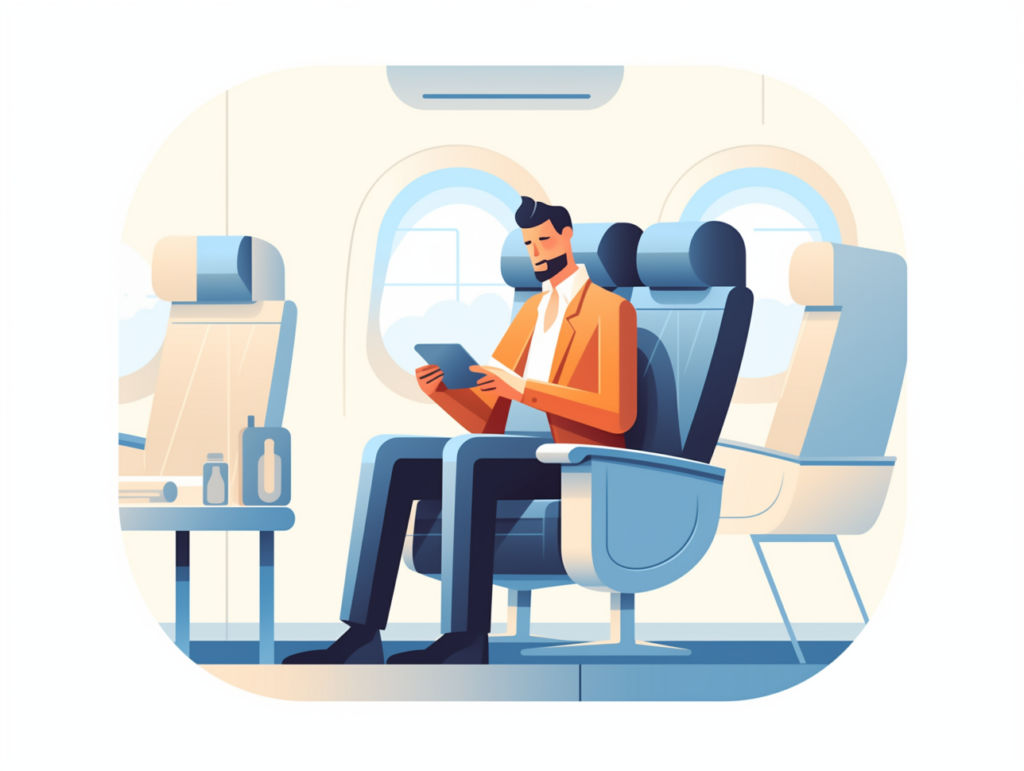What Happens If You Don’t Put Your Phone in Airplane Mode?
Written by Nadia Podrabinek
Hello, my name is Nadia. I usually write about traveling (there are so many places to fit all the lifestyles), relocation, and living in a foreign country (adapting to a different culture). My travels stretch beyond Spain, with journeys to the US, Italy, Norway, Portugal, and France. Relocating to Spain in 2018, I lived in cities from Barcelona to Madrid, currently calling Valencia home. Follow me on Twitter, Facebook, Instagram, or LinkedIn! ... show more

The short answer
Nothing, but it will drain the battery quicker.
And don’t worry about the flight – using a phone without airplane mode will not affect the plane’s systems.
However, leaving your phone on a regular mode can quickly drain the phone’s battery and overload nearby cell towers due to the plane’s high speed.
While one or two phones might not pose a significant issue, they can still cause disruptions to cell tower connections. But many of us just don’t care about that, right?
An airline pilot I know confirmed that leaving a phone on regular mode drains the battery faster.
Additionally, there’s a slight chance of incurring roaming charges on international flights when the phone tries to connect to foreign towers.
What people say on Reddit
Communications technician here, this is correct. there isnt really any component in modern airplanes that is substantially affected by GSM signals from phones. The rule is completely antiquated as the radios and equippment airlines use isnt even on the same frequency as cellphones.
Honestly believe its just so that you pay attention to the safety instructions more and dont talk on the phone on planes cus its annoying.
Jaugernut
I think I’ve read in can create noise on the air traffic control channels if there are enough phones not in airplane mode, but it’s an annoyance more than anything, nothing dire. But yeah. Battery loss is a big one
nciscokid
There really isn’t a legitimate possibility. If there were, terrorists would fly with backpacks full of cell phones turned on. If there were even a remote chance of “navigational interference” they wouldn’t be allowed on the plane.
BrooSwane
well…honestly it would be worse for your phone then the plane. Old school cell phones would totally interfere with the communication system of the plane but modern cell phones won’t. I am sure if we googled it enough we would find that the determination is that by continuing to put a blanket ban on phone use in flight is more along the lines of the human mind has its limitations and 3 hours of the guy behind you barking into his phone might just be enough to self justify having a test of the decompression system mid flight lol
ehunke
The controversy
In the U.S., the Federal Communications Commission (FCC) bans the use of mobile phones on flying aircraft, while the Federal Aviation Administration (FAA) allows airlines to decide if personal electronic devices can be used, provided they don’t interfere with the aircraft’s systems.
If you’re interested, FAA is the primary authority concerning the safety of flight operations.
In Europe and other parts of the world, some airlines have started allowing limited mobile phone use. However, many of them still prohibit it, especially during take-off and landing.
In my experience, I’ve never been asked to switch my cellphone to airplane mode during a flight, except for the rare situations when other passengers have fear of flying (aerophobia), and they ask me to do that. 😏
What is an airplane mode?
Airplane Mode is a setting available on mobile phones, tablets, and other wireless devices. When activated, it suspends many of the device’s signal transmitting functions—specifically, it turns off the device’s ability to:
- Make or receive calls
- Send or receive text messages
- Use cellular data
- Connect to Wi-Fi (though you can usually turn Wi-Fi back on separately)
- Use Bluetooth (though, like Wi-Fi, you can often turn this back on separately)
- Use GPS services
The primary purpose of airplane mode is to make electronic devices safe to use in environments where radio transmissions could interfere with equipment, such as on airplanes. By disabling these functions, the device complies with regulations and avoids potential interference with an airplane’s navigation and communication systems.
Is it different on Apple or Android devices?
The fundamental function of airplane mode is the same across both Apple (iOS) and Android devices. When activated, it disables the device’s wireless communication capabilities. However, the way you access and activate airplane mode might differ slightly between the two:
- On Apple devices (iOS): You can activate airplane mode by going to “Settings” and toggling on “Airplane Mode.” Alternatively, you can swipe into the Control Center and tap the airplane icon.
- On Android devices: The method can vary slightly depending on the manufacturer and version of Android, but generally, you can swipe down from the top of the screen to access the quick settings menu and tap the airplane icon. You can also go to “Settings” and find the “Airplane Mode” option to toggle it on or off.
After activating airplane mode, both Apple and Android devices allow users to separately turn on Wi-Fi or Bluetooth without exiting airplane mode. This feature is useful, especially on flights that offer in-flight Wi-Fi services.
Why do we have airplane mode limitation on airplanes?

In essence, there is still controversy that revolves around safety concerns, potential interference with aircraft systems, and social considerations.
While there’s no definitive evidence linking mobile phone use to air accidents, caution remains the prevailing approach.
I hope that someday a new research will emerge that resolves this situation, allowing us to use mobile phones on any airline.
